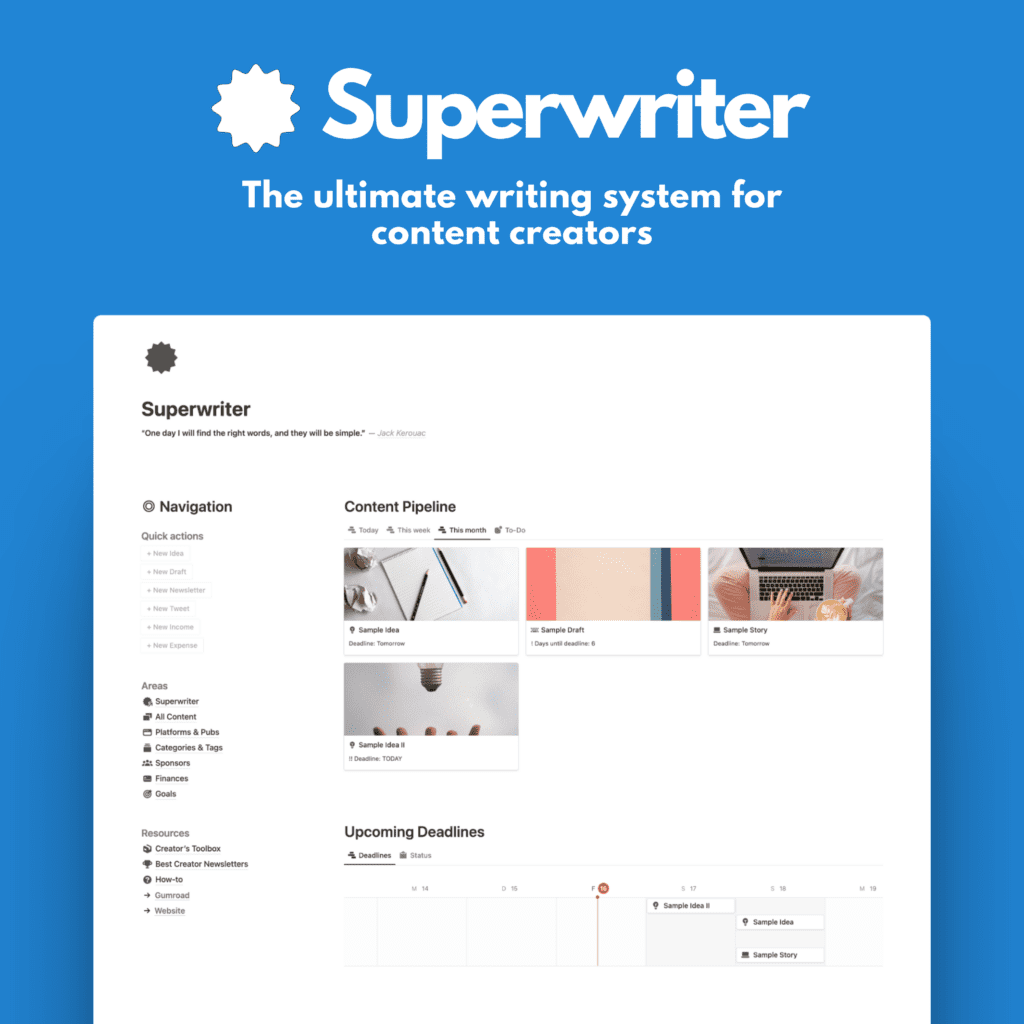The first ever email blast was sent out in 1978 by a guy named Gary Thuerk, a marketing manager at Digital Equipment Corporation, to about 400 Arpanet advertising machines. This one email blast generated $13 million in sales, according to Brafton.
As you can tell, newsletters were a big deal right from the get-go.
Fast forward 39 years, and a small email-driven, writer-focused project saw the light of day.
Its name? Substack.
And nobody could have predicted the success this newsletter platform would see back then.
From Silicon Valley Dream to Side Hustle
If you haven’t heard of Substack by now, you must be living under a rock. I’ve written multiple articles about the platform, I run my newsletter on it, and I read many of my favorite newsletters there.
In 6 short years, Substack has revolutionized the way people share their thoughts, ideas, and stories with the world. But do you know how it all started? Let’s take a ride through the history of Substack.
Substack was founded in 2017 by Chris Best, Jairaj Sethi, and Hamish McKenzie. The three had previously worked at Kik Messenger and PandoDaily, but they had bigger ambitions. They wanted to create a platform that would help writers monetize their work and build their own writing empires without ads, writer-focused and email-based.
Initially, Substack was just a side project. The team worked on it in their spare time while holding down full-time jobs. But as they started to see traction, they decided to go all in.
In 2018, they raised $2 million in seed funding.
The Rise of the Paid Newsletter
One of the key features that set Substack apart from other writing platforms has been its focus on paid newsletters. Instead of relying on ads or sponsorships, writers charge their readers a subscription fee to access their content. Substack takes a 10% cut of these earnings, leaving the rest for the writers.
The paid newsletter model quickly caught on, especially among independent journalists and opinion writers. By 2020, Substack had attracted some big-name writers like Matt Taibbi, Andrew Sullivan, and Glenn Greenwald.
The Content Moderation Controversy
As Substack’s popularity skyrocketed, so did the concerns around the platform’s content moderation policies. Critics pointed out that Substack’s open publishing model allowed for potentially harmful or offensive content to be distributed unchecked.
To address these concerns, Substack announced a new content moderation policy in May 2021. The policy prohibits newsletters that promote hate speech, harassment, or other forms of harmful content. This move was seen as a significant step towards ensuring the platform is a safe and welcoming place for all its users.
Substack’s new content moderation policy is a welcome change for those who had criticized the platform’s handling of harmful content in the past. The policy establishes clear rules around what is acceptable and what is not, making it easier for writers to understand what kind of content is allowed on the platform.
In addition to the policy itself, Substack has also set up a public appeals process for writers who feel their content has been unfairly removed. This process provides a way for writers to voice their concerns and appeal any decisions made by Substack’s moderators.
The pro dilemma
In 2018, Substack launched Substack Pro. They didn’t share details about this program until March 0f 2021, although the news and many insights had long been running around the web.
Substack Pro was offering publishing advances of varying amounts ($250K in some cases) to big-name newsletter writers and journalists for a period of one year, giving them a chance to try Substack, move their writing empire there, and grow it without worrying about first-year success.
In exchange, Substack received 85% of the subscription revenue generated by the writers. In year 2, the writer would no longer receive a set amount, but instead keep 90% of subscription revenue.
What did sound reasonable in theory, turned into a dilemma when Substack didn’t disclose who and how much they paid.
Substack Pro also turned out to be a losing deal for some. Matt Yglesias was one of the writers who received $250K from Substack in his first year. He then earned around $860,000. With the usual 10% cut, this would have been $775,000 in revenue for him, more than 3x of the Substack Pro sum.
The Future of Substack
Despite the controversy, Substack’s popularity shows no signs of slowing down. In fact, the platform is continuing to innovate and expand. Over the past 2 years, Substack introduced Podcasts to the platform and also expanded into video content.
Most recently, Substack launched Notes, a Twitter-like short content platform to connect with fellow writers and readers.
While many see Substack as a newsletter platform, it hasn’t failed to clarify that it’s a blogging platform, a podcast station, and a video-sharing tool as well.
The bottom line
From a side project to a Silicon Valley darling, Substack has come a long way in just a few short years. Its focus on paid newsletters has made it a go-to platform for independent writers looking to monetize their content.
The allure of Substack is simple: An easy-to-use and free platform that couples blogging with email marketing and podcasting.
It’s hard to find a better one. To me, there are only 3 missing features that keep Substack from becoming the number 1 writing and email marketing platform on the planet.
Find out about those 3 here.








